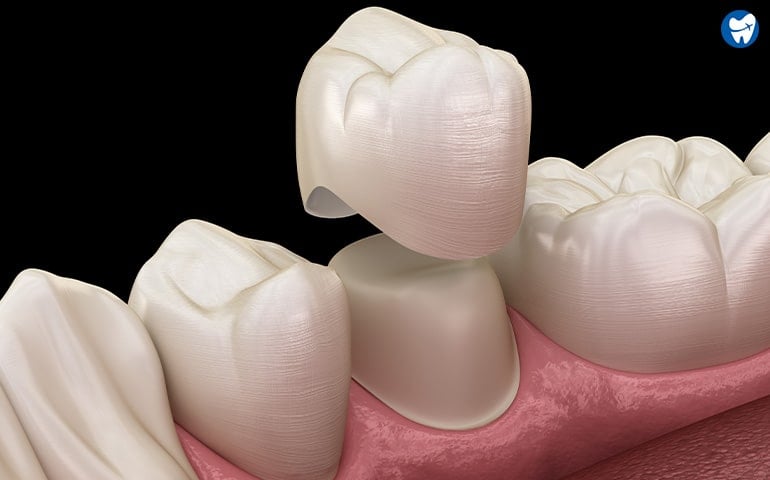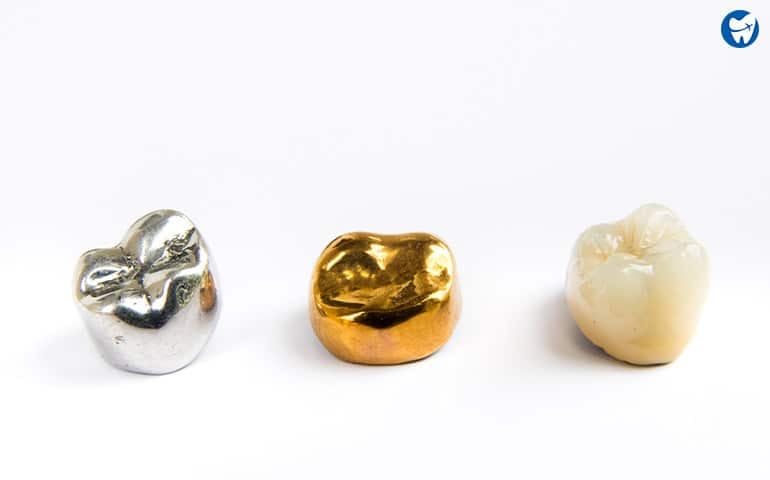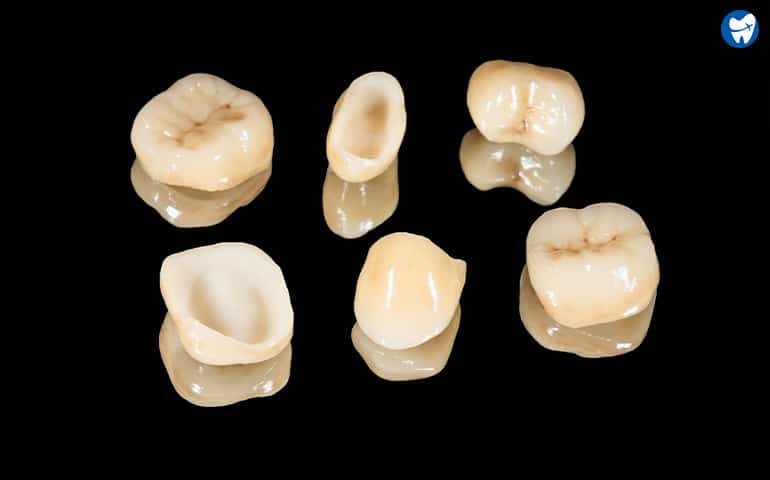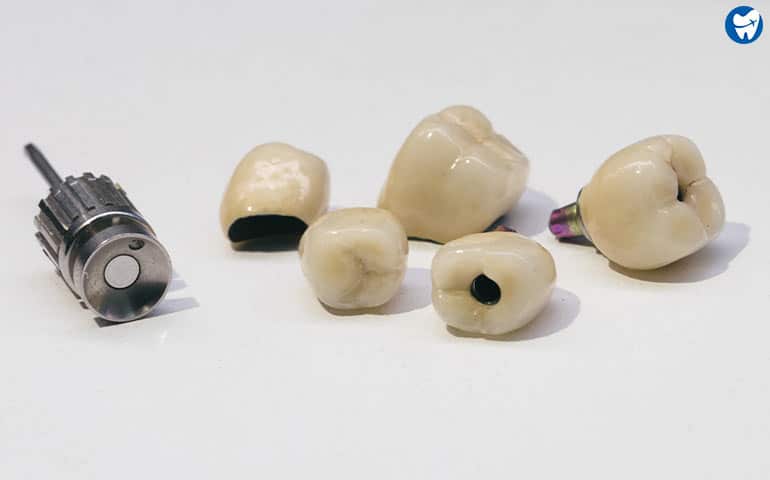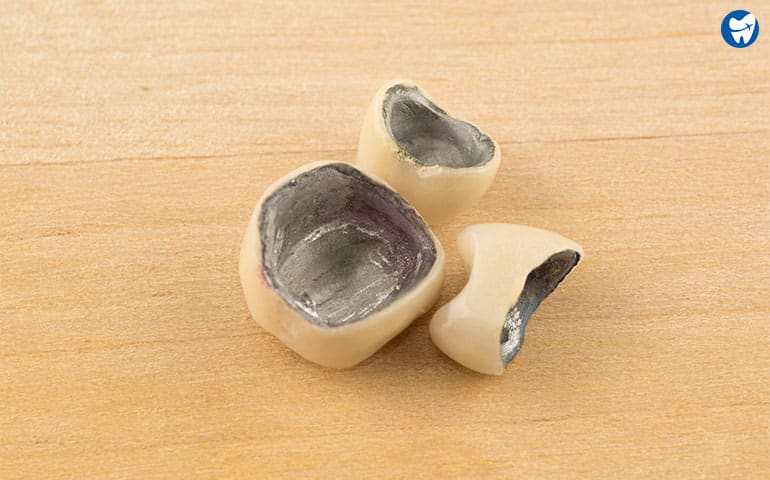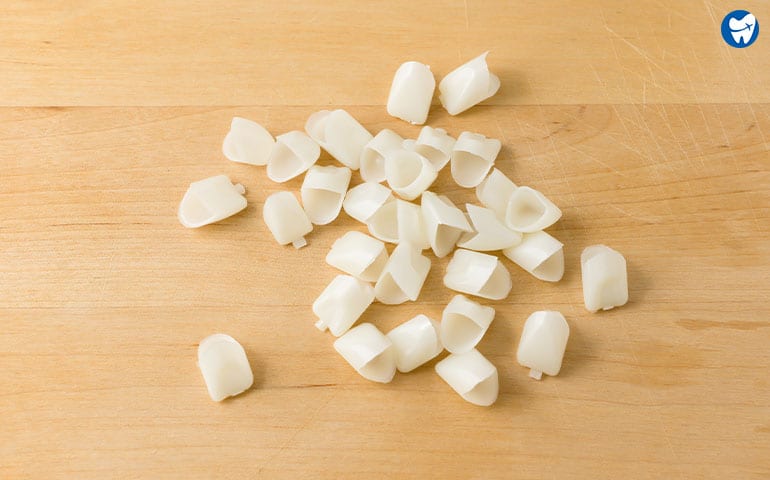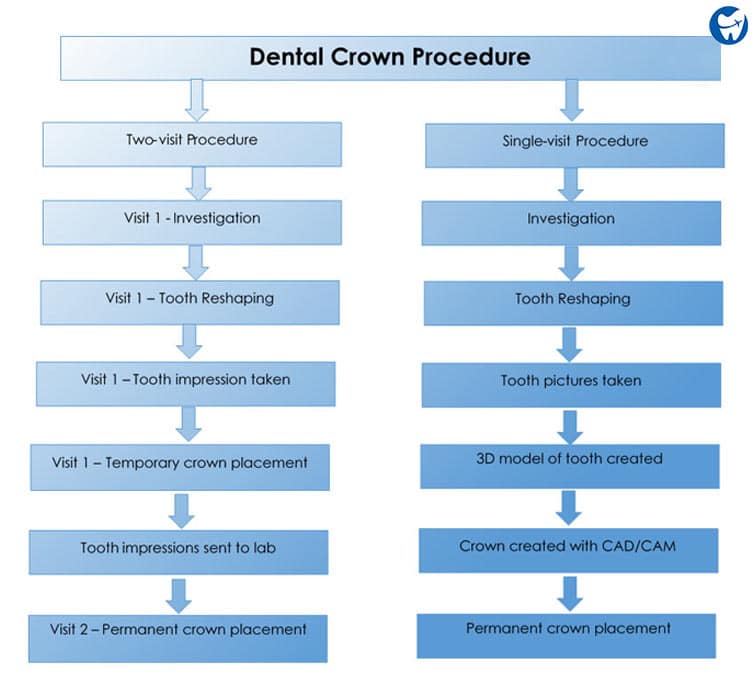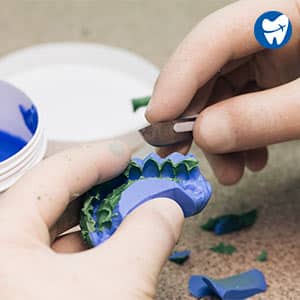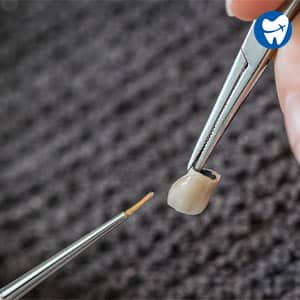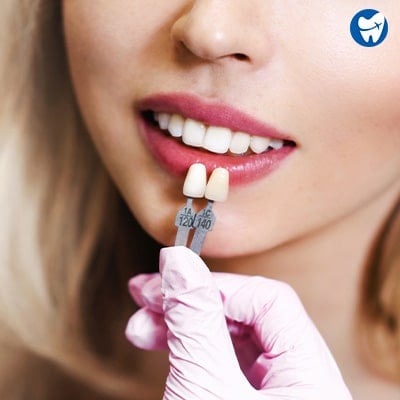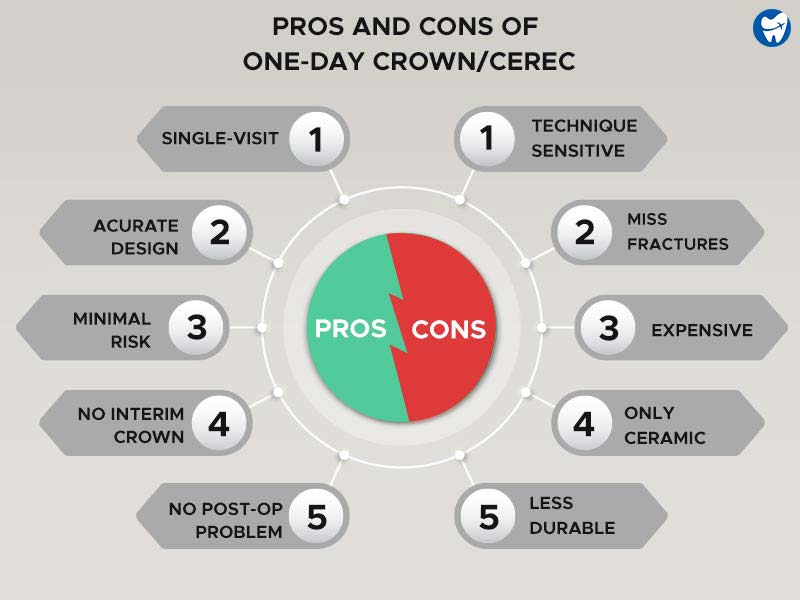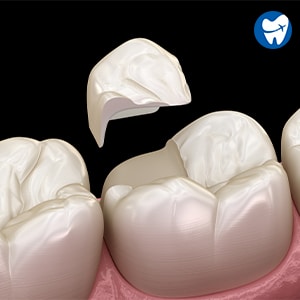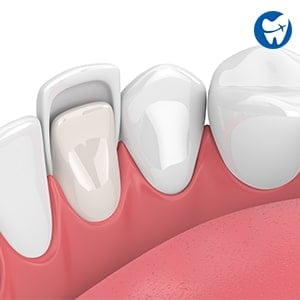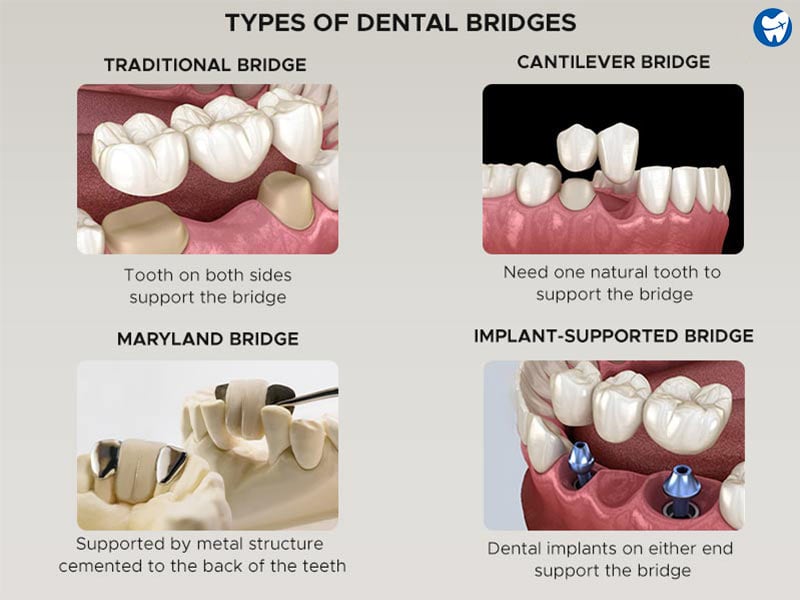Dental crowns, in simple terms, are a cover for a damaged tooth. They are effective in treating, improving, and protecting teeth that are decayed, broken, discolored, or malformed teeth. Apart from being a durable replacement, they restore oral function as well. Continue reading for more details.
If you are looking for a dental crown, this article gives you a detailed rundown of the cost, types, procedures, aftercare, and more.
Dental Crown Procedure
When Do You Need a Dental Crown?
When broadly classified, you would need crowns for three main reasons:
Function & Support
- To cover a large decayed tooth
- Protect a weak tooth from cracking
- To cover a large restoration of the tooth
Appearance
- Protects tipped teeth and malformed teeth
- Cover developmental anomalies of the tooth
Cover-up For Other Treatments
- It holds a dental bridge in a place
- Covers a dental implant
- Covers & protects root canal treated tooth
What is a dental crown?
Even with the recent advances in dentistry, crowns remain the treatment of choice for most dental problems.
They mainly ‘cover’ the tooth surface hence the word ‘cap’ is also synonymously used.
In short, they improve esthetics, function, stability, and support for badly damaged teeth.
Moreover, they are a fit option for covering implants and RCT-treated teeth.
Types of Dental Crown
The various materials used in the crown fabrication are ceramic/porcelain, zirconia, gold, chromium, stainless steel, or a combination of metal and porcelain.
Different Types of Dental Crown
Your dentist will recommend the type based on your dental requirement.
Each of them is chosen based on their strength, esthetics, and sometimes both.
All-ceramic Crowns
These are prepared only with ceramics; hence are called all-ceramic crowns. They mimic natural teeth and provide excellent esthetics.
If you have broken or badly damaged front teeth, then you should go for all-ceramics.
All-ceramic Crowns
Suitable For: Front teeth
Advantages: Mimic natural teeth | Excellent esthetics | Food does not accumulate on the surface | Acidic foods do not damage the crown
Disadvantages: Poor strength | Prone to fracture and chipping | Affected by moisture | Liable to crack | Least durable
Zirconia Crowns
The word Zircon means golden in color (Arabic; “Zargun”). Zirconium crowns are made from Zirconium oxide. It is a metal-free tooth-colored crown.
Zirconia Crowns
Zirconium crown is compatible [1] with the body and does not produce any allergic reactions.
Hence, they are the perfect choice for those who are allergic to metals.
It has high strength and long durability. It is three times stronger than all-ceramic restorations. [2]
Suitable For: Back teeth
Advantages: Good aesthetics | High strength | Biocompatible
Disadvantages: Rough surface | Cracks easily | Damages the opposing tooth
Porcelain Fused to Metal (PFM)
PFM is the most widely used crown. It is a hybrid of porcelain and metal framework.
It is composed of metal alloy inside, and the outer surface is fabricated using porcelain. Metal gives strength, and porcelain provides aesthetics.
PFM Crowns
Your dentist will trim the tooth to accommodate the crown. A thickness of 0.3mm is required for it to fit correctly over the prepared tooth surface.
Base metal alloys (cobalt, nickel, chromium), titanium, and gold alloys fabricate PFM.
Suitable For: Front and back teeth
Advantages: Greater strength | Highly durable
Disadvantages: Less esthetic due to metal line visible at gums | Porcelain can chip | May fracture at the metal-ceramic junction
All-metal Crowns
Full metal crowns cover all the surfaces of the teeth and are fabricated using only metal alloys; hence they are called all-metal crowns.
They are prepared using either
- Noble metals like gold, platinum, palladium, and silver
- Base metals such as cobalt, nickel, and chromium
Gold combined with palladium, nickel, or chromium increases its strength and its cost.
Metal can induce an immune response such as swelling, redness of the gums, oral ulcers, and allergic reactions. [3]
If you have a metal allergy, it is best to consult your dentist for further treatment.
Suitable For: Back teeth |Previously filled teeth | Severely decayed teeth
Advantages: Maximum strength | High durability
Disadvantage: Poor esthetic
EMAX Crowns
It is an alternative to a metallic crown in terms of strength. It is a particular type of crown made from a single block of lithium disilicate.
It looks exactly like your natural tooth. Additionally, it has high strength, due to which it is used in stress-bearing areas such as the back teeth.
Suitable For: Front and back teeth
Advantages: Good esthetics | high strength | Stain-proof
Disadvantage: Chipping
Feldspathic Porcelain Crowns
These are the combination of potassium feldspar, kaolin, and quartz. [4]
It provides you a natural and translucent esthetic look when used for your front teeth.
However, it is the weakest among all-ceramics because of its low strength.
Suitable For: Front teeth
Advantage: Good esthetics
Disadvantage: Low strength | Weakest ceramic
Provisional /Temporary crown
Temporary crowns, as the name suggests, are designed to last for a short period.
These can be the dentist’s best friend or enemy, as they are designed to last only for a week or two.
Temporary Crowns
Temporary crowns are attached for a brief period till the permanent crown gets fabricated.
Keep in mind that you should not wear this for more than 2 to 3 weeks. Temporary crowns
- Have high-quality as well as well-fitting margins
- Are comfortable to use and stable in the mouth
These are strong enough to withstand the bite pressure without deforming but tend to fall out prematurely.
Additionally, you should avoid chewing hard food with them.
Temporary crowns are not suitable to protect the repaired tooth for a longer time. They give the idea of how the final crown looks.
Acrylic and composite resins are used in their fabrication.
Suitable For: All teeth
Advantage: Excellent esthetic
Disadvantage: Easily stained
Low cost crowns + certified dentists = value for money!
Book your appointmentProperties of Dental Crown
Now that you have a fair idea about the types of crowns available, it is important to know their ideal properties.
Most importantly, they should be compatible with oral tissues, have long-term durability, look similar to natural teeth, and withstand biting forces.
Properties of Dental Crown
| Biological | Mechanical | Esthetic |
| Protect the pulp | Resist chewing forces | Resemble natural shape & color |
| Maintain gum health | Does not fracture easily | Color should not fade |
| No allergic reactions | Does not fracture the opposing tooth | Prevent teeth tipping |
| Balance the bite | Long-lasting and durable | Maintain tooth position |
| Protect tooth structure | Well fitted margins | Translucent in appearance |
Advantages & Disadvantages of Dental Crowns
Dental crowns have dual purposes. It can protect the tooth and give an excellent esthetic appearance.
However, they have a few disadvantages, such as trimming the tooth structure to fit the crown.
It is often extensive and causes irreversible damage to the tooth.
- Protects the tooth from fracture
- Improves chewing function
- Helps in speech
- Protect the tooth from decay
- Maintains space between teeth
- Prevent tipping of the teeth
- Improves patients’ appearance
- Ceramic chipping
- Traditional crowns need 2 visits
- Long time for fabrication
- Nickel causes allergic reactions
- Pain & sensitivity in some cases
- Disolution of cement under the crown leads to decay
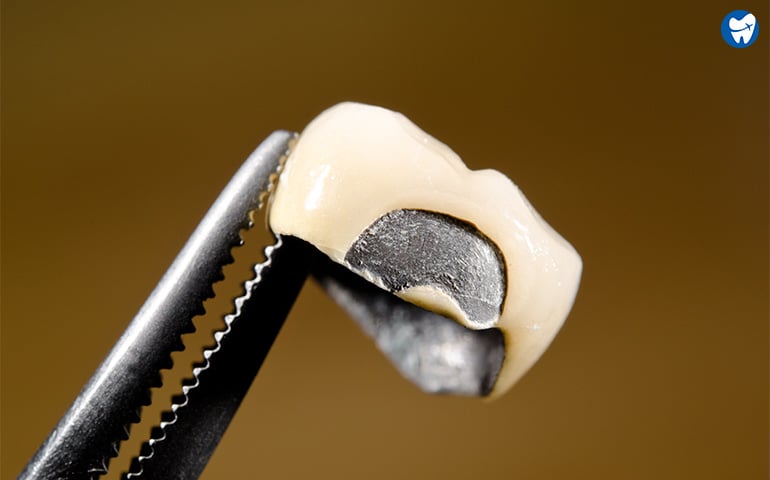
Chipped Ceramic Crown
Dental Crown Procedure
The procedure for a crown placement is similar if you opt for a same-day or a conventional process. The latter requires two or more visits.
Read on to know more about the treatment.
Conventional Procedure
Anesthesia
Your dentist will give a local anesthetic (LA) injection to the gum around the tooth to numb the affected area.
At this point, most people experience a stinging or burning sensation.
LA prevents the transmission of pain from the affected area to the brain.
Administer Local Anesthesia
The tooth and adjacent gum area will become numb. This effect will last up to 1 to 2 hours.
Tooth Preparation
In this step, trimming of your tooth structure takes place.
Reshaping of the tooth depends on your
- Tooth structure
- Type of crown chosen
If needed, your dentist will build up the tooth’s core for additional support.
Tooth Preparation for Crown
If the tooth trimming is not adequate, it may lead to an improper fit and an abnormal bite.
Impression Taking
The dentist will use paste or putty material to get a negative replica of the tooth and surrounding structure which is called an impression.
A specific plaster (gypsum) is mixed with water and poured over the impression to form a cast.
After the plaster sets, the impression is carefully removed from the cast.
Impression Taking – Dental Crown Procedure
In the lab, the technician fabricates the wax pattern and the casting. Finally, the permanent prosthesis is prepared and polished.
Temporary/Provisional Crown
These are made from resins and composites.
Temporary crowns can protect your teeth for a short period.
They give adequate time to the dentist for each clinical procedure and technicians to fabricate the final crown.
Temporary Crown Preparation
Trial and Cementation
After two weeks, your dentist will remove the temporary crown and check the color and shape of the permanent crown, which is placed over the tooth with the help of dental cement.
Matching the Shades of the Teeth Using Shade Guide
Dentist with Tools and Teeth Color Chart
One-day Crown/CEREC (Chairside Economical Restoration of Esthetic Ceramic)
This procedure will get you a new crown in a single appointment with your dentist and is ideal for front teeth restoration.
It needs specialized equipment or “Chairside CAD/CAM” that allows dentists to design and create restorations using computers.
Chairside CAD/CAM consists of 3 units:
- An intraoral camera/Computer-Aided Manufacturing (CAM): It helps the dentist scan the treatment site in the mouth.
- An acquisition unit/Computer-Aided Design (CAD): The computer creates a 3-D model. The dentist designs the prosthesis and transfers the design data to a milling unit via a wireless link.
- Milling Unit: Fabricates prosthesis out of a high-strength ceramic block.
Pros and Cons of Same Day Crown
CEREC – Pros & Cons
Procedure
- After numbing the tooth and surrounding area with local anesthesia, your dentist will scan your tooth and prepare its impression.
- Using CAD software, your dentist designs a 3-D model of the tooth and prosthesis. All these procedures can take around 1 to 2 hours.
- Later the design data will be sent to a milling or grinding unit that fabricates the prosthesis with a high degree of accuracy.
- Finally, your dentist will place the prosthesis over the tooth with the help of cement.
It is a time-saving procedure, taking 2 to 4 hours to complete the entire process and deliver it on the same day.
How Much Do Dental Crowns Cost?
People often ask, “How much is a crown?” or “How much is it cap to a tooth?” The average cost of a dental crown varies between $1100 to $1500 per tooth.
The cost of crowns depends on the severity of your teeth’ damage, location, size, and the crown material.
Below are the prices of different types of crowns in the USA and Canada.
Dental Crown Cost in USD
| Crown Type | USA | Canada |
| Porcelain | $800-3,000 | $800-2,000 |
| Porcelain fused metal | $800-1,400 | $600-1,800 |
| Metal crowns | $800-2,500 | $500-1,500 |
| Gold | $600-2,500 | $1,425 |
| Zirconia | $1,000-2,500 | $1,000-2,500 |
| Emax crown | $1,200-1,800 | $1,100-1,600 |
*Cost per tooth
In general, a single tooth crown will cost between $800 and $3,000 in the US/Canada.
However, the treatment cost will vary based on your bone and gum conditions.
Additional charges can apply for mouth examination, X-ray scans, bone grafting, root canal treatment, or gum surgery.
If you are looking for cheap crowns for teeth, consider metal or stainless-steel crowns.
They are the most affordable crowns and cost around $300-500 per tooth.
Even porcelain fused metals are cost-effective and offer pleasing aesthetics.
On average, dental insurance pays around $400 for a single dental crown. Its price varies about $900 with insurance and $1300 without insurance.
What About the Average Price of a Dental Crown on Front and Back Tooth?
Front tooth crown cost (per tooth)
- Porcelain crown would cost about $800-3,000
- Zirconia crown price would be around $1,000-2,500
Emax crowns cost about $1,200-1,800 when used in back teeth.
How Much Should a Crown Cost with Insurance?
Dental insurance covers an average of $400 for a crown. Prices vary from $900 with insurance and $1,300 without insurance.
Insurance generally covers 50% of your crown price when needed for medical reasons. You have to pay the remaining fee.
However, insurance does not cover it if needed for cosmetic reasons. The maximum annual coverage limit by many dental plans is $1,000-1,500. [5]
Average Crown Cost Without Insurance
| Type | Uninsured price | Insurance coverage | Out-of-pocket expenses (with insurance) |
| Porcelain-fused-to-metal | $500-1,500 | $875-1,400 | $282-1,000 |
| Gold alloy crowns | $600-2,500 | $830-2,465 | $519-1,140 |
| All-porcelain | $800-3,000 | $860- 3,000 | $530-1,875 |
*Cost per tooth
Hurry! Get low-cost crowns by certified dentists!
Grab your FREE quoteHow to Take Care of Dental Crowns?
A permanent crown takes 3 to 4 days to adjust in your mouth. This is mainly the time it takes for the crown cement to set.
After its placement, avoid eating sticky or hard food for the first 24 hours.
Here are a few practical tips for taking care of your crowns:
- Maintain good oral hygiene
- Gently brush twice a day
- Floss once a day to prevent decay of the teeth
- Eating hard or sticky foods can lead to the crack of ceramic
- Lifting the crown using a toothpick from the tooth can cause displacement
- Wear a nightguard if you have bruxism
- Visit your dentist regularly
How Long Does a Dental Crown Last?
The lifetime of crowns depends on the material. On average, the teeth cap for adults can stay long, ranging from 10 to 30 years. [6]
Survival Rate of Dental Crowns
| Types of Crown | Survival rate | Survival Period |
| Gold alloy | 96% | Over 10 years |
| Porcelain fused metal (PFM) | 90% | Over 10 years |
| All ceramic | 75-80% | Over 10-15 years |
| Emax | 90% | Over 10 years |
| Zirconia | 88% | over 5 years |
Metals can last over 20 years. A CEREC crown can survive up to 10 to 15 years.
On the other hand, composites are the weakest. Front tooth crowns can last around 15 years.
Alternatives to Dental Crowns
Alternatives to dental crowns are three-quarter crown, onlay, and veneers.
The choice of these alternative methods depends on the extent of damage and the location of your tooth.
Three-Quarter Crowns
This fits over the tooth surface without completely covering it.
This crown preparation requires less tooth trimming and maintains the natural shape of the tooth. It provides
- Thick and bulky tooth structure
- Caries-free teeth
Onlay
Onlay covers your tooth’s biting surface.
It covers the tooth cusp, whereas the crown covers the entire surface of the tooth.
Indications for onlay are decayed tooth or fractured tooth or cusp.
Onlay | Alternative to Dental Crowns
Onlays are more durable and cheaper. They protect the weak tooth and require the removal of less tooth structure.
Veneers
Veneers are custom-made shells of tooth-colored materials, mainly designed to cover the tooth’s front surface to enhance your appearance.
Veneers change the shape, size, color, or length of your tooth, but they don’t destroy your tooth.
Dental Veneer – Alternative to Dental Crown
Dental Bridges
Dental bridges help to fill the gap created by multiple missing teeth. It is held in place by dental crowns placed on both sides of the gap.
A dental bridge can either be implant-supported or tooth-implant.
Like crowns, bridges use porcelain, ceramic, zirconia, porcelain fused to metal, metal alloys, etc.
The main types of dental bridges – Traditional, Cantilever, Maryland, and Implant-supported.
Dental Bridge Types
Conclusion
You have many choices when it comes to capping teeth. A qualified dentist can find the best type of crown for your dental needs.
To connect to the best dentists who offer affordable dental crowns overseas, contact us and claim a free quote.
FAQs
The cost of a dental crown may vary depending on the extent of tooth damage and the type of crown materials.
- Regular dental crowns will cost between $1,100-1,500 per tooth
- Gold crown price can range from $600-2,500
- All-ceramic can cost from $800-3,000
- PFM can cost $500-1,500
- CEREC’s price is about $500-1,500 per tooth
On average, conventional dental crowns can last a long time, for about 10 to 30 years.
- All metal, gold, and PFM tend to last longer than others. Metals can stay over 20 years
- All-ceramics is esthetically better but not strong and lasts about 15 years
- Emax crowns last up to 15 years
- Zirconia caps can last over 5-10 years or may even last a lifetime
There is no difference between a dental crown and a cap. A dental crown is also called a cap.
The older term is a cap, but now most dentists prefer to use the term crown.
Metal crowns are the most affordable and cheapest compared to other alternatives.
Its price ranges from $800-1,400 per tooth, and stainless steel costs around $300-500 per tooth.
A complete mouth set of crowns cost approximately $20,000. It helps to rebuild damaged teeth, restore your chewing ability and speech.
Fabrication time for the full set can take several months to a year. However, the cost will vary depending on the type and treatment.
If you need a root canal, bone grafting, or gum surgery, the price will increase.
Yes, veneers are cheaper.
Crowns usually cost more than veneers because it covers the entire tooth, but veneers cover only minor shape corrections.
- Porcelain veneers of about 0.5 mm thick can cost $500-1,100 per tooth
- Lumineers of about 0.2mm-0.3mm thick can cost $700-1,300 per tooth
- Veneers for the front tooth cost about $2,000-4,500
- Lumineers for the front tooth cost approximately $2,800-5,500
Don’t panic! If you swallow the crown, it will pass in a few days.
They are small and smooth, so it is easy for them to pass through the digestive tract.
If the crown is not fitted correctly over the tooth’s surface, that can reduce its lifespan.
It damages overall oral health, affects bite and smile, causes more decay and cavities, gum disease, and joint pain.
These are some signs of ill-fitting crown
- Bite doesn’t feel right
- Pressure on adjacent teeth
- Loose crown
- Inflamed gums
- Pain on chewing
A new dental cap often takes two to four days to adjust in your mouth.
Sometimes it even feels uneven for 3 to 4 days, which is normal after a new prosthesis.
If it still feels uncomfortable even after four days, consult your dentist.
A Crown is always better and stronger than a filling when appropriately placed over the tooth’s surface by an experienced dentist.
It gives you a more natural look and function compared to the filling. It also restores normal chewing patterns.
A filling or restoration can act as a wedge while chewing and can lead to tooth fracture. This is especially true for large amalgam restorations.
It will not protect the tooth for a long period. So, if a more extensive filling is needed, go for crown placement.
A prosthodontist is a dentist who does crowns, bridges, and implants.
Prosthodontists have advanced training in the replacement of teeth and esthetic restorations.
They also treat the head and neck deformities and replace the missing parts of the jaw and face.
